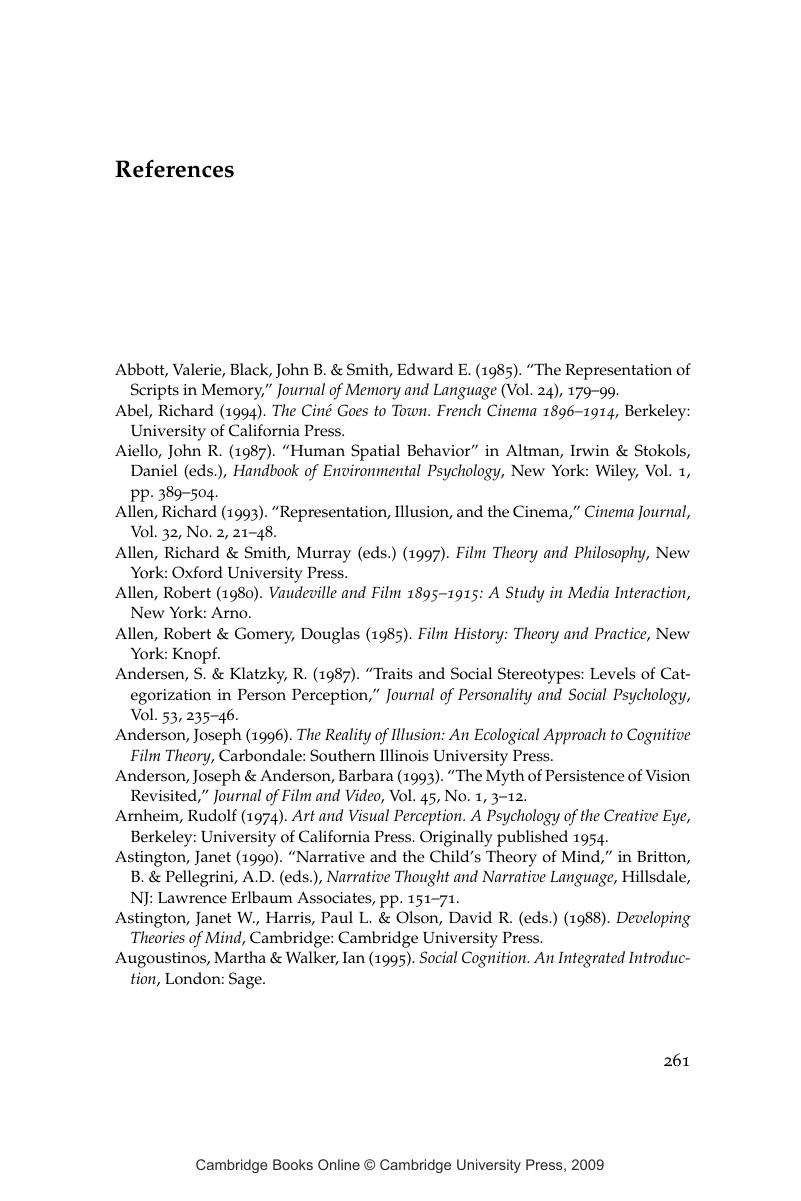Book contents
- Frontmatter
- Contents
- List of Illustrations
- Preface and Acknowledgments
- Understanding Cinema
- 1 Understanding and Dispositions
- 2 Understanding Point-of-View Editing
- 3 Variable Framing and Personal Space
- 4 Character Psychology and Mental Attribution
- 5 The Case for a Psychological Theory of Cinema
- Notes
- References
- Index
- References
- Frontmatter
- Contents
- List of Illustrations
- Preface and Acknowledgments
- Understanding Cinema
- 1 Understanding and Dispositions
- 2 Understanding Point-of-View Editing
- 3 Variable Framing and Personal Space
- 4 Character Psychology and Mental Attribution
- 5 The Case for a Psychological Theory of Cinema
- Notes
- References
- Index
- References
Summary

- Type
- Chapter
- Information
- Understanding CinemaA Psychological Theory of Moving Imagery, pp. 261 - 276Publisher: Cambridge University PressPrint publication year: 2003

